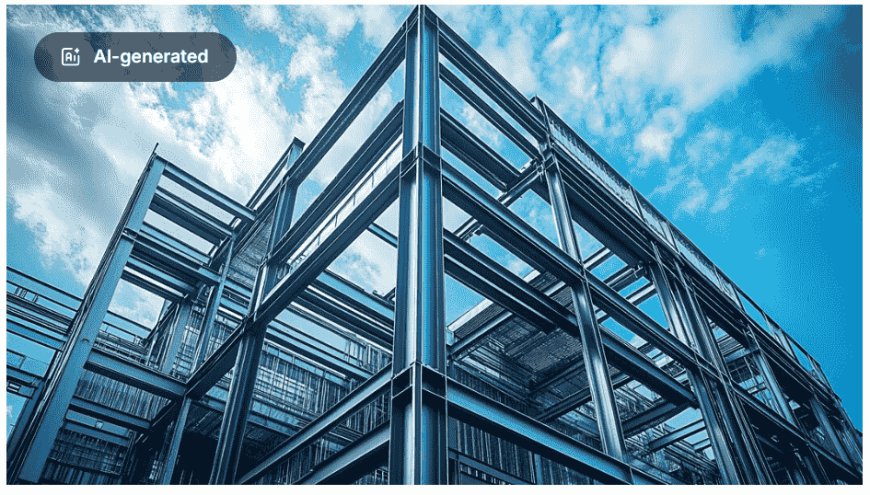The Advantages of Pre-Engineered Metal Buildings

Pre-engineered metal buildings have become a preferred choice in the construction industry for a variety of applications, ranging from commercial and industrial spaces to residential structures. The combination of speed, efficiency, and cost-effectiveness makes pre-engineered metal buildings a standout option. Whether you're considering prefab metal buildings or structural steel buildings, the benefits are numerous and compelling.
Speed and Efficiency
One of the primary advantages of pre-engineered metal buildings is the speed with which they can be constructed. Unlike traditional construction methods, which can take months or even years to complete, pre-engineered metal buildings are designed and manufactured off-site. This means that once the building components arrive at the construction site, they can be quickly assembled, significantly reducing the overall construction timeline.
Prefab metal buildings take this efficiency to the next level. Since the components are prefabricated in a controlled environment, they are precisely engineered to fit together seamlessly. This reduces the potential for delays due to weather conditions or on-site errors. The result is a faster, more predictable construction process, allowing businesses and property owners to occupy their new spaces sooner.
Cost-Effectiveness
Cost is always a critical factor in construction, and pre-engineered metal buildings offer significant savings. The materials used in prefab metal buildings are often less expensive than traditional construction materials like wood or brick. Additionally, the reduced construction time translates to lower labor costs. With less time spent on-site, there's also a decrease in the costs associated with site preparation, equipment rental, and project management.
Structural steel buildings are known for their durability and low maintenance requirements, which further contribute to their cost-effectiveness. Steel is resistant to many of the issues that plague traditional building materials, such as termites, rot, and mold. This longevity means fewer repairs and lower maintenance costs over the life of the building, making pre-engineered metal buildings a smart financial investment.
Versatility and Customization
One of the standout features of pre-engineered metal buildings is their versatility. These buildings can be customized to meet a wide range of needs, from warehouses and factories to office spaces and even residential homes. The design flexibility allows for various layouts, sizes, and finishes, ensuring that pre-engineered metal buildings can be tailored to suit almost any purpose.
Structural steel buildings are particularly known for their adaptability. The open floor plans typical of these structures provide a blank canvas that can be configured to meet specific requirements. Whether you need large, unobstructed spaces for manufacturing or smaller, segmented areas for offices, pre-engineered metal buildings can accommodate your needs.
Durability and Strength
Durability is a key advantage of pre-engineered metal buildings. Steel is one of the strongest building materials available, capable of withstanding extreme weather conditions, including heavy snow, high winds, and even seismic activity. Structural steel buildings are also fire-resistant, which significantly reduces the risk of fire damage and can lead to lower insurance premiums.
Additionally, prefab metal buildings are designed to be long-lasting and low-maintenance. Unlike wood, steel does not warp, crack, or suffer from insect damage. This resilience makes pre-engineered metal buildings an excellent choice for those looking for a building that will stand the test of time with minimal upkeep.
Environmental Benefits
In an era where sustainability is increasingly important, pre-engineered metal buildings offer significant environmental benefits. Steel is one of the most recyclable materials on the planet, and many structural steel buildings are constructed using recycled steel. This reduces the environmental impact of the building process and supports broader efforts to conserve natural resources.
Additionally, prefab metal buildings can be designed with energy efficiency in mind. Features like insulated panels, energy-efficient windows, and reflective roofing materials can help reduce energy consumption, making pre-engineered metal buildings an environmentally responsible choice.
Conclusion
The growing popularity of pre-engineered metal buildings is no surprise given their numerous advantages. Whether you're exploring prefab metal buildings for their speed and cost-effectiveness or considering structural steel buildings for their durability and customization options, steel buildings offer a modern solution that meets a wide range of needs. With benefits including strength, affordability, versatility, and sustainability, pre-engineered metal buildings are an excellent choice for any construction project.
